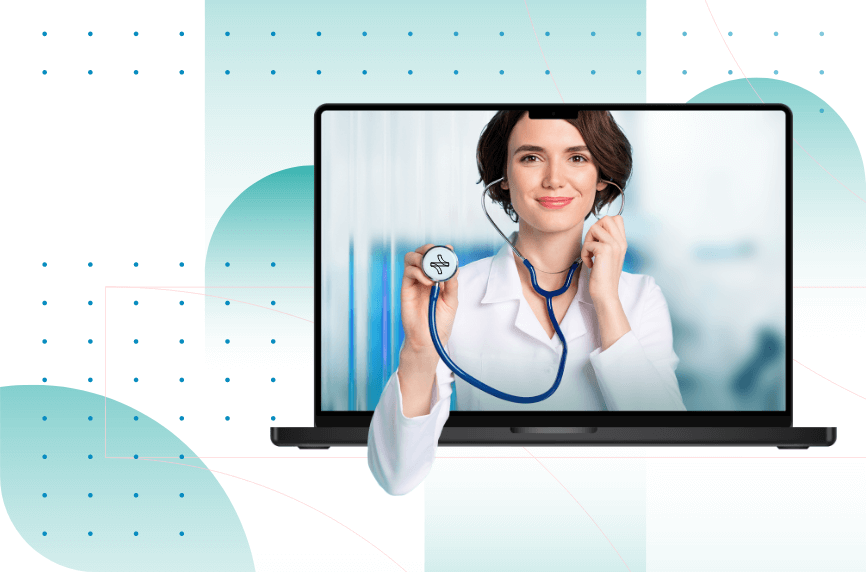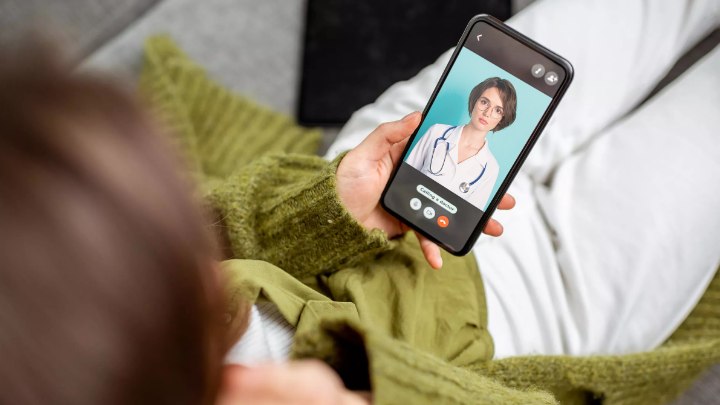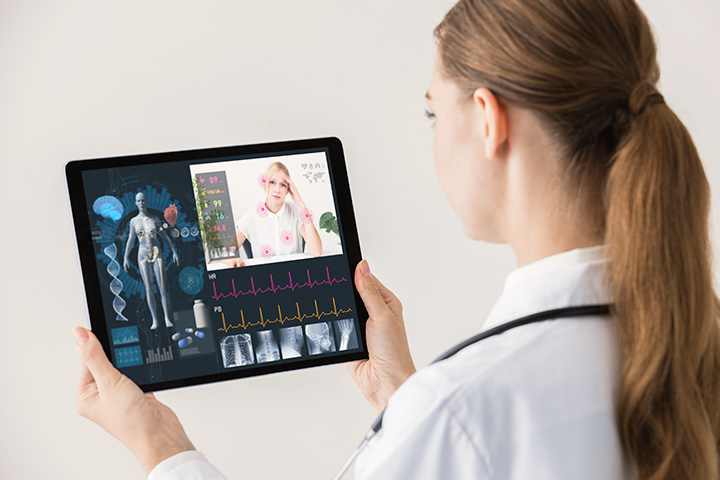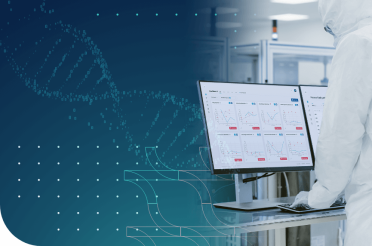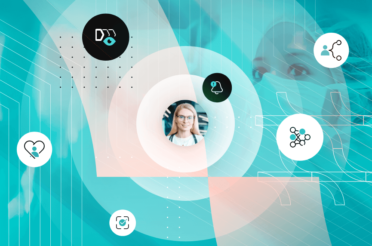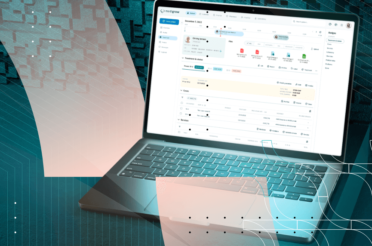The COVID-19 pandemic may be done and over, but its impact on medicine can still be seen. Most businesses had to adapt to the situation and move their operations online. This is where telemedicine came to be.
This practice incorporates the delivery of health care and information virtually.
It is not a technology or a separate or new branch of medicine but rather a collection of platforms and software solutions that offer users the ability to access virtual alternatives to classical patient care services.
Definition of telemedicine
The most reliable authority to give a definition on telemedicine would probably be the World Health Organization (WHO):
“The delivery of health care services, where distance is a critical factor, by all healthcare professionals using information and communications technologies for the exchange of valid information for diagnosis, treatment and prevention of disease and injuries, research and evaluation, and the continuing medical education of health care workers, with the aim of advancing the health of individuals and communities.”
Although often used interchangeably, telemedicine and telehealth are distinct concepts.
The difference between telehealth and telemedicine is subtle – the former is broader. It encompasses clinical and non-clinical services, including administrative meetings and health education. Telemedicine refers specifically to clinical care.
How telemedicine works
Telemedicine platforms rely on advanced telecommunications technologies to facilitate communication. Patients use devices like smartphones and computers to connect with healthcare providers via video calls or secure text messaging.
Some telemedicine services also allow the exchange of medical data through an integrated health system. That would include test results or vital signs.
Telemedicine’s rapid growth depends on a robust telecommunications infrastructure that supports secure video calls and data sharing. These advancements allow healthcare providers to extend services like prescription refills and chronic disease management.
That infrastructure allows for the service to function:
- Patient setup: The patient accesses telemedicine services using a device equipped with an internet connection and a camera. Many platforms also support text or voice-based interactions.
- Scheduling and Consultation: Patients can book appointments via a secure portal or app. Medical care providers assess symptoms and offer advice or prescriptions during the consultation.
- Data Integration: Telemedicine software integrates with electronic health records (EHRs), which allows for seamless sharing of medical data, test results, and treatment plans.
- Follow-Ups and Monitoring: Some platforms incorporate remote patient monitoring, where wearable devices transmit data like vital signs to health professionals. This feature is particularly useful for managing chronic diseases.
Telemedicine is not necessarily limited to those functions as it encompasses all kinds of distant medical treatments and innovation in the area is constant. Those innovations have brought up a wide variety of telemedicine services.
Types of Telemedicine services
The history and use of practices such as telemedicine have brought a lot of data and research on the topic and how it impacts the medical industry. Modern medical literature categorizes telemedicine into the following three categories.
Store-and-forward
Store-and-forward (asynchronous telemedicine) is a type of telemedicine consultation in which patients send medical images or other medical information to a healthcare professional. Store-and-forward can be useful when real-time communication is not necessary or when the patient and healthcare provider are located in different time zones.
The medical information is sent to the healthcare provider through a secure platform, such as telemedicine software. The healthcare provider can review the information and provide a diagnosis or treatment recommendations.
This asynchronous method is widely used in dermatology, radiology, and pathology.
Real-time telemedicine
Real-time telemedicine allows patients and healthcare providers to interact instantly through video or phone calls. A telemedicine provider can use this approach to deliver remote clinical services efficiently, reducing the need for in-person visits.
It is particularly effective for urgent care, where prompt evaluation and decision-making are critical. Real-time telemedicine also streamlines follow-up consultations and enables clear discussions about symptoms, diagnoses, and treatment plans.
By eliminating geographical barriers, it improves access to care while offering a convenient, efficient experience for both patients and providers.
Remote Monitoring
Wearable devices collect data on patients’ vital signs in real time, such as high blood pressure or glucose levels. These metrics are shared with telemedicine providers for continuous monitoring, thus reducing visits to emergency rooms and improving health outcomes.
Telemedicine software often includes a variety of tools to support different communication formats. A video conferencing service enables real-time video and audio interactions between patients and healthcare providers. In contrast, documents consist of pre-recorded text and image files that can be shared as needed.
Similarly, informational videos and text can be prepared in advance and distributed at any time to the appropriate recipients.
This flexibility allows telemedicine platforms to meet diverse communication and care delivery needs efficiently.
Benefits of telemedicine for patients
Patients are the heart of healthcare. Often they tend to neglect their health due to slight inconveniences that telemedicine can address. It significantly enhances patient care with a focus on accessibility.
Faster access to information from specialists
Telemedicine gives anyone much quicker access to medical professionals. Video conferencing or audio calls are easy to manage and much less time-consuming than a visit to the hospital and allow patients to share their pain or discomfort at the onset.
This faster access to care is sometimes as good as a follow-up examination. Many health issues don’t disappear long after treatment starts and require repeated visits to discuss the management of medication and symptoms. Telemedicine turns out to be the optimal solution that reduces the time it costs of these repeated visits to the hospital.
Management of chronic illnesses
Millions of people live with chronic illnesses and require ongoing medical support to maintain a good quality of life. Effective management of these conditions relies on consistent communication and care from healthcare providers.
Telemedicine services play a significant role in improving care for patients with chronic conditions by enabling:
- Telebehavioral care and therapy, which provides mental health support crucial for managing conditions like anxiety, depression, or stress-related illnesses.
- Routine check-ins for patients with chronic diseases such as certain cancers, rheumatological disorders, diabetes, and migraines, ensuring symptoms are monitored and treatments are adjusted as needed.
- Clear explanations of test or imaging results, helping patients understand their condition and treatment options without delays.
Chronic conditions are treated overall better when there is constant supervision by professionals. Telemedicine allows just that.
Cost effectiveness
Nearly a quarter of respondents (21%) to the Software Advice Survey cited not having to travel as an essential benefit of telemedicine. Travelling to the doctor’s office, especially for people living in rural areas, can be a considerable expense.
Not to mention medical services themselves may come with a hefty price tag. According to a 2014 study, traditional in-office visits average $136 to $176, but virtual visits range in cost from $40 to $50 per visit.
Private payers and their insurance provider partners cut costs that could be redirected to the treatment of the illness itself.
Pediatric care
Pediatric telemedicine enables children to receive treatment from the comfort of their homes. This approach allows family members to be present during consultations, which is vital for a child’s emotional well-being and care.
Although home-based care may not offer all the benefits of onsite services, it is highly effective for addressing minor illnesses. By reducing travel and wait times, child care telemedicine ensures faster diagnosis and treatment and provides convenience for both children and their families.
Reduced time waiting for doctor consultation
Patients can schedule telemedicine appointments at their convenience rather than having to take time off work or arrange for transportation to a healthcare facility.
Some telemedicine platforms have a virtual waiting room feature, which allows patients to “check in” for their appointments remotely. As a result, healthcare providers reduce the time patients spend waiting in a physical waiting room.
Telemedicine offers a future where healthcare is not just a service, but a personalized interactive medicine. It achieves that through its exceptional ability to adapt to individual needs and circumstances
Benefits of telemedicine for healthcare providers
The ripple effect of telemedicine extends beyond individuals. The benefits of telemedicine offer profound advantages to healthcare providers striving for efficiency and innovation.
Control of infectious illnesses
When patients having an infectious disease visit a hospital, they might put public health in danger. Thankfully, virtual conference calls are enough for some medical problems that do not require immediate hospitalization.
Telemedicine services that allow for online communication are a simple and direct way to escape this problem. Patients don’t have to visit the medical facility, which creates a sense of comfort.
Enhancing efficiency and reducing overhead
Telemedicine helps providers streamline processes, which in effect means a significant reduction in operational costs.
Physicians can see more patients without the need for physical office space, which usually comes with overhead costs like utilities and office staff. This allows them to operate with greater flexibility and manage their time and resources more effectively.
Virtual medical consultations, powered by telecommunications technology, eliminate the logistical hurdles of in-person visits, such as travel time and scheduling conflicts. This allows physicians to allocate more time to hospitalized patients who require urgent care, improving overall efficiency and patient outcomes.
Improving access to specialists
Telemedicine offers healthcare providers the ability to consult with specialists without the constraints of geographical limitations. A primary care physician can seek advice from a cardiologist, a rural clinic can connect with an oncologist or a farmer can find help for their animals through veterinary telemedicine.
This access to specialized knowledge improves the quality of care and ensures that patients receive expert treatment even at remote locations.
Physicians and healthcare providers gain significant benefits from adopting telemedicine. However, they also face the responsibility of leading its implementation, both for their own practice and to support their patients in adapting to the technology.
Obstacles that prevent telemedicine from mass adoption
Telemedicine has the power to transform healthcare, but it’s not without its challenges. These hurdles can make it difficult to fully integrate into everyday medical practice. To make telemedicine a part of daily life, we need to address these issues so both patients and providers can use it with confidence.
Technical aspects
Technical issues are reported to be one of the main obstacles to telemedicine solutions. The adoption of this medical practice might be sluggish because of no universal access to technology, poor Internet connection, and low expansion of rapid Internet networks.
Device issues, breakdowns of video consultation platforms, and software upgrades are other commonly reported problems. Furthermore, some patients may face difficulties while using different telemedicine platforms and need in person technical support.
If patients use a well-developed telemedicine platform, their primary requirement is a stable internet connection. To make the most of a consultation, preparation is also essential. Patients should organize their thoughts ahead of time to clearly communicate their concerns and questions. Creating a quiet, comfortable space ensures minimal distractions during the call. They should also confirm that their camera, microphone, and audio are working properly and that their internet connection is strong enough for a smooth experience.
However, sharing personal information through these platforms raises concerns about data storage and access. This introduces the next challenge: ensuring patient privacy and data security.
Data privacy and confidentiality
Another major setback that prevents patients from engaging in telemedicine visits is the concerns regarding privacy and confidentiality. These concerns are a major limitation because patients demand the use of technology for care delivery without infringing on their data.
Compliance with regulations offers procedures and standards that contribute to data privacy.
While General Data Protection Regulation (GDPR) aims to help EU citizens gain more control over their personal information, the Health Insurance Portability and Accountability Act (HIPAA) builds the foundation for data protection in the US.
All parties involved in developing telemedicine software should be HIPAA-compliant. For example, a telemedicine software vendor should ensure that the company under which it operates follows HIPAA regulations.
To ensure that patients’ data is safe from leakage and misuse by third parties, telemedicine companies follow a number of security principles. For example, with data encryption, coherent password policies, multi-factor authentication, and security audits, medical organizations may prevent unauthorized access to sensitive information.
Training of healthcare providers and patients
For many doctors, relying on software to replace traditional communication can feel risky, leading to hesitation in fully supporting telemedicine. Patients, on the other hand, often worry about making mistakes during virtual visits due to unfamiliarity with the technology.
These concerns are valid but primarily arise when physicians receive little or no training in telemedicine practices. To address this, investments in courses, workshops, and hands-on training are essential for both doctors and patients. Education on how telemedicine platforms work—and their potential to improve patient outcomes—can build confidence on both sides.
Additionally, physicians offering telemedicine must hold a valid medical license in each patient’s location. This ensures compliance with local healthcare regulations and builds trust in virtual care.
Doctor-patient relationship
In studies that compared patient satisfaction between real-life visits and telemedicine visits, most patients reported that the presence of a doctor made them feel calmer. They mentioned that non-verbal cues, such as body language and empathetic touches improved their experience. Those cues can only occur when both parties are in the same room. A pure doctor’s advice sometimes is insufficient.
Patients may have a much better experience with real-life doctor visits, but emergencies and other factors should also be taken into consideration. People with major health problems should always aim for real-life interaction with medical professionals, but those with less demanding issues might also use a HIPAA-/GDPR-compliant telemedicine solution.
As solutions emerge to address these challenges, the future of telemedicine holds great promise for improving access to healthcare and enhancing human services. With the right investment in infrastructure, physician training, and regulatory compliance, telemedicine can become a trusted cornerstone of modern healthcare delivery.
Key telemedicine technologies
At the heart of the telemedical transformation are key technologies that enhance the effectiveness and accessibility of virtual care. Let us delve into detail on how they do so.
Telemedicine and remote patient monitoring (RPM)
While telemedicine is about delivering health services remotely, RPM refers to monitoring a patient’s health status from a distance using technology. After that, health data is transmitted to a central monitoring system of the medical institution for the patient intake process and analysis.
In the age of the Internet of Things (IoT), ultrafast connectivity enables medical devices and equipment to be connected to a server or the cloud. Thus, telemedicine technology can operate with real-time data, which leads to higher-quality remote healthcare services.
Telemedicine and RPM often work together to provide more comprehensive care to patients. For instance, healthcare providers might use telemedicine to consult a patient remotely while using RPM to monitor the patient’s health status and send alerts.
Integrated wearables track patient vital signs throughout the day and transmit collected data to the central cloud system. Healthcare providers can then access patient information via a dashboard or clinical decision support system that compiles the data and lets them see the patient status in real time.
This way, RPM and telemedicine can help patients with chronic conditions better manage their health and may even help prevent urgent care and emergency room visits. When patients feel unwell, they may schedule a telemedicine appointment.
Artificial intelligence (AI) in telemedicine
Artificial intelligence is making headlines across innovative sectors, including the medical field.
Some examples include:
- Healthcare providers may utilize AI to develop virtual assistants or chatbots that can answer patient questions, provide information about medical conditions, and assist with scheduling appointments.
- Artificial intelligence may provide prompts that facilitate taking a patient’s history during video visits through dynamically adjusting questions based on responses.
- AI-based tools may offer personalized reminders for medication adherence and recommend routine checks based on current health data.
The boundless capabilities of AI are sure to provide even more opportunities for its integration with telemedicine.
Integration with Electronic Health Record (EMR) system
Integrating EHR systems with telehealth software allows seamless exchange of health data between platforms. This connection is vital for enhancing efficiency and elevating the quality of care. It enables medical professionals to make well-informed decisions and leads to faster diagnoses, fewer prescription errors, and better patient outcomes.
EMR integration may also reduce record-keeping, as all patient data comes from a single up-to-date source. Similarly, telemedicine solutions integrated with a practice management system can also enhance communication and patient outcomes, as well as improve the overall efficiency of the medical facility.
Medical apps paving the way for telemedicine
Telemedicine apps are growing in popularity and are becoming more widely accessible as they provide efficient healthcare services.
For example, the mobile app Healthsuite, developed by BGO Software for Ampersand Health, supports patients with chronic inflammatory conditions. This solution helps people easily contact the clinical team responsible for the treatment, medication adherence, and symptom management.
Thanks to a couple of key features available, telemedicine applications offer a seamless user experience for doctors and patients:
- Clinical Dashboard: Telemedicine apps offer clinicians a dashboard to manage patient health data collected from virtual visits, symptom surveys, remote monitoring devices, and billing information. This helps medical professionals prioritize treatment strategies and deliver better care. Patients can also maintain customizable records with data about their medical conditions.
- Virtual Visits and Communication Tools: Patients can connect with medical professionals in real time using video calls, phone conversations, and text messages. As telecommunication technology becomes part of everyday life, seamless video calls feel as routine as any other meeting.
- Symptom Research and Analytics: Daily symptom surveys provide doctors with real-time insights into a patient’s condition, particularly for mental health or chronic illnesses. This data helps doctors better understand patient health habits and parameters, leading to improved care. Comprehensive analytics from collected data also support treatment and diagnosis decisions.
- Medication Reminders: Medication adherence is essential for effective treatment and recovery. Telehealth apps can include alerts and notifications to remind patients to take their medication, improving health outcomes.
- Educational Modules: Providing patients with condition-specific education helps them better understand their medical situation and actively engage in their treatment. Custom research articles and educational lectures tailored to their health status can also enhance medication adherence.
Looking ahead, advanced telemedicine apps will redefine global healthcare delivery. With tools to manage patient records, improve basic understanding of health conditions, and provide cost-effective solutions, these apps will make care more accessible and efficient.
Explore more innovative digital health solutions tailored to your needs Learn all the ways through which you can use the full potential of telemedicine by comparing and integrating the best solutions with expert guidance.

Present and future of telemedicine
Currently, the global telemedicine market is valued at approximately $114.98 billion in 2023 and is projected to grow at a compound annual growth rate (CAGR) of 25.2% from 2024 to 2030 according to Grand View research. [1]
Key drivers of this growth include the rising adoption of AI, with the global AI healthcare market expected to surpass $45 billion by 2026. [2]
The rise of smartphones and mobile technologies has further accelerated telemedicine’s growth. As smartphone penetration is expected to reach 84% by 2025, telemedicine solutions are increasingly accessible to a broader population. This is particularly important in rural areas where internet access and healthcare services are often limited. [1]
Telemedicine became crucial in areas like mental health, with non-traditional platforms such as Weibo and TikTok being used for online mental health services in China. Similarly, in India, the Ministry of Health launched the National Tele Mental Health Programme (Tele MANAS) in 2022 to improve mental health service delivery. [1]
With strong market players like Teladoc Health, American Well, and Zoom Video Communications continuing to innovate and expand their offerings, the future of telemedicine looks promising.
BGO Software is at the forefront of this way by providing cutting-edge solutions for your organisation.
Sources
[1] Telemedicine Market Size, Share And Growth Report, 2030
[2] Artificial Intelligence Market Size, Share, Growth Report 2030









